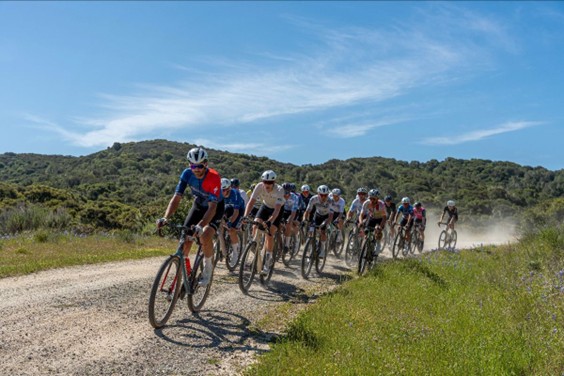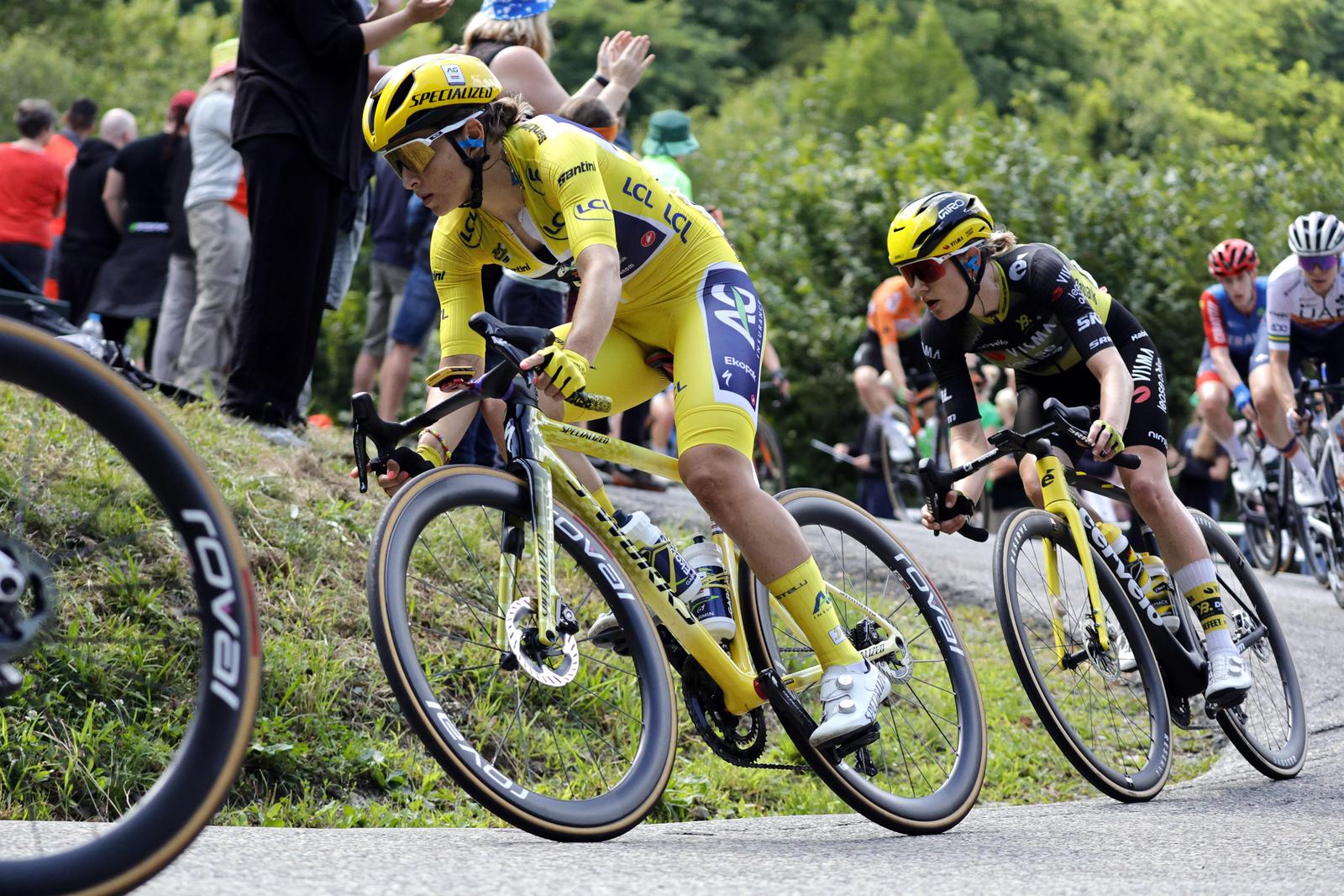Highlights the opportunity for performance gains through understanding physiology.
As a cycling coach focused on optimizing performance, particularly for mountain bikers, understanding the unique physiological transitions that female athletes face is critical. One of the most significant yet under-acknowledged shifts in a woman’s athletic life is menopause.
Many female cyclists in their 40s and 50s suddenly find themselves struggling with weight gain, decreased performance, increased fatigue, and psychological frustration — despite maintaining their usual training schedules. This isn’t a matter of waning willpower. It’s biology, specifically the impact of declining estrogen and hormonal fluctuations that underlie what’s now being referred to as the Metabolic Syndrome of Menopause.
In this article, we’ll explore how menopause changes a woman’s metabolism, how that impacts training and nutrition strategies, and most importantly — how we can adapt our coaching to support performance, mental health, and longevity.
1. Hormones and Metabolic Shifts: What’s Really Happening?
Menopause is not just about hot flashes and mood swings. Estrogen, once protective and metabolically supportive, begins to decline during perimenopause — a phase that can start in a woman’s early to mid-40s. This triggers several key changes:
- Increased visceral fat, especially around the abdomen
- Reduced insulin sensitivity → higher blood sugar and fatigue
- Worsening lipid profiles → lower HDL, higher triglycerides
- Increased blood pressure and muscle loss (sarcopenia)
- Decline in energy metabolism → fewer calories burned at rest
These changes collectively increase the risk for metabolic syndrome, even in highly active women, making it a silent performance saboteur.
2. Power-to-Weight Ratio: When the Numbers Stop Adding Up
For mountain bikers, power-to-weight ratio (PWR) is a performance cornerstone. As muscle mass decreases and visceral fat increases, PWR naturally drops — even if wattage remains stable. Weight gain isn’t always obvious, but an increase in fat mass (especially around the waist) often comes with a loss of lean muscle.
Coaching Considerations:
- Focus on preserving lean mass rather than simply reducing scale weight.
- Shift from calorie restriction to protein-forward eating (1.5–1.8g/kg/day).
- Include regular resistance training (2–3x/week) to combat sarcopenia.
- Avoid overtraining — which spikes cortisol and worsens fat storage.
3. The Psychology of Midlife Weight Gain
Even the fittest athletes can find midlife weight gain distressing. Many feel betrayed by their bodies — and confused that what worked at 30 no longer does. This can lead to anxiety, burnout, or disordered eating patterns.
Coaching Response:
- Normalize the conversation. Make hormonal health part of performance reviews.
- Remind athletes: “You’re not broken, you’re changing.”
- Track body composition rather than weight alone — using DEXA or InBody scans.
- Offer empathy and education, not guilt or ‘tough love.’
4. Tailoring Nutrition for the Midlife Cyclist
Nutrition must evolve to support hormonal balance, metabolic stability, and muscular integrity.
Key Guidelines:
- Protein timing matters: Include 20–30g protein post-ride and before sleep.
- Cut ultra-processed carbs and added sugars → these worsen insulin resistance.
- Transition to a Mediterranean-style diet: fiber-rich plants, healthy fats, lean protein.
- Monitor key biomarkers: fasting insulin, HbA1c, triglycerides, and HDL.
What to Watch:
Even women with “normal” BMI may have hidden insulin resistance. Ask your athlete if they’ve checked their waist-to-hip ratio (over 0.85 or waist >35″ is a red flag).
5. Training Load and Recovery in the Menopausal Athlete
The hormonal buffer that once allowed athletes to recover quickly from hard efforts is no longer present.
Adjustments to Training Programs:
- Build in more recovery between high-intensity sessions.
- Use heart rate variability (HRV) to guide training readiness.
- Respect sleep disruptions — progesterone loss impairs sleep quality.
- Prioritize shorter, more focused intensity vs. long grind sessions.
Hormonal changes can lead to lowered VO₂ max and slower recovery, especially if sleep is compromised. Addressing sleep through lifestyle, nutrition, and (if needed) bioidentical progesterone or HRT can be transformative.
6. Is HRT an Option? The Performance Case for Hormone Therapy
Hormone therapy (particularly transdermal estrogen and micronized progesterone) has been shown to:
- Reduce belly fat
- Improve lipid profile
- Stabilize blood sugar
- Preserve muscle mass
For the performance-oriented athlete, this could mean the difference between stagnation and sustained excellence. However, HRT must be personalized — and prescribed by a practitioner who understands the needs of active women.
7. Supplements, Medications, and Other Tools
Sometimes nutrition and training aren’t enough.
- Creatine: A well-supported supplement for preserving muscle and cognitive function in midlife women.
- Magnesium, omega-3s, and adaptogens may support sleep and stress management.
These are performance tools, not shortcuts — when used responsibly, they can help keep female cyclists in the saddle for decades to come.
8. Final Thought: It’s Time to Rethink Coaching the Female Cyclist
We need a new framework for coaching midlife athletes. One that:
- Embraces hormonal literacy
- Prioritizes long-term health over short-term results
- Addresses both metabolic and emotional challenges
- Measures success beyond weight or wattage
With the right adjustments, female cyclists in their 40s, 50s, and beyond can continue to train hard, recover well, and perform at elite levels. Midlife isn’t a decline — it’s a recalibration.
Practical Checklist for Coaches Working with Midlife Female Cyclists:
✅ Track metabolic markers (HbA1c, insulin, waist circumference, lipids)
✅ Prioritize protein (1.5–1.8g/kg) and resistance training
✅ Reduce training load if sleep and recovery are impaired
✅ Normalize weight fluctuations and monitor body composition
✅ Discuss HRT and supplementation when needed
✅ Educate on PWR changes and reset expectations
✅ Focus on sustainable habits, not quick fixes
✅ Encourage mental wellness and identity beyond performance




